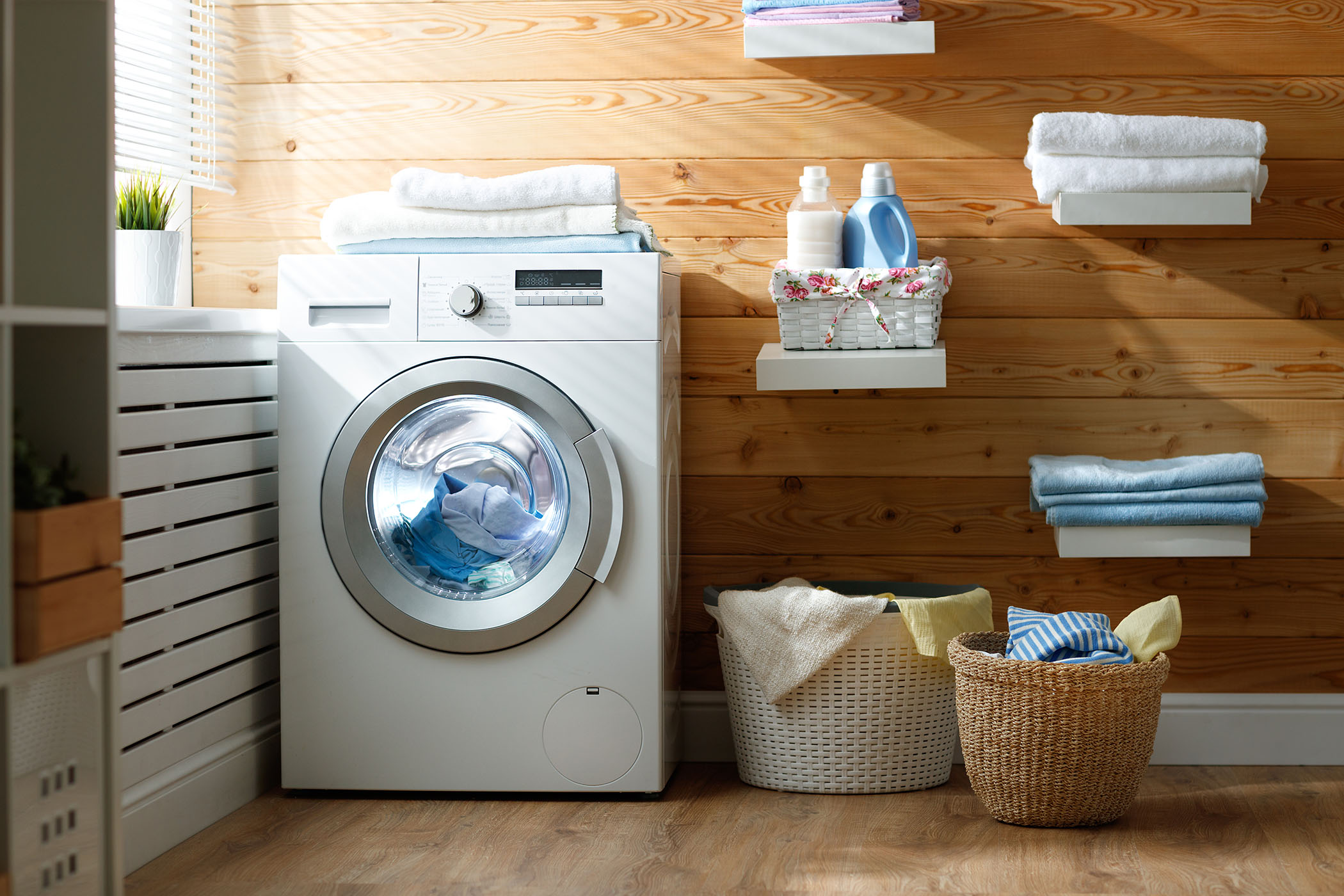An official website of the United States government
 United States Department of Labor
United States Department of Labor

The Entry Level Item (ELI) category of Washers and Dryers is part of the index for Major Appliances, and includes all full size and compact automatic clothes washers, clothes dryers, and washer/dryer combinations for use in the home. In this factsheet, we examine the regression model used in the quality adjustment of price data for clothes washers.
The sample used for the new hedonic model included approximately 190 observations. About 72 percent of observations were sourced from the web, while the remaining 28 percent were quotes from traditional collection. Approximately 90 percent of prices were from June or July of 2020. There were more than a dozen unique brands in the sample and nearly 130 distinct washer models. The top 5 brands accounted for 86 percent of observations. There were more than 2 dozen distinct outlets in the sample, and the top 5 outlets accounted for 83 percent of observations.
Table 1 presents the details of the estimation of the current model used to quality adjust clothes washers.
| Variable Name | DF | Parameter Estimate | Standard Error | t Value | Pr > |t| | Tolerance |
|---|---|---|---|---|---|---|
|
Intercept |
1 | 5.14331 | 0.07454 | 69 | <.0001 | |
|
User Options: Number of speeds (front-loading -loading washers only) |
1 | 0.026 | 0.00476 | 5.47 | <.0001 | 0.25735 |
|
User Options: Number of Wash Cycles |
1 | 0.0078 | 0.00278 | 2.81 | 0.0056 | 0.7696 |
|
Size: Capacity |
1 | 0.29703 | 0.01623 | 18.3 | <.0001 | 0.44446 |
|
Size: Large, front-loading washer ( >= 5.0 cubic feet) |
1 | 0.06355 | 0.02198 | 2.89 | 0.0043 | 0.61711 |
|
Features: Number of dispensers |
1 | 0.03868 | 0.00878 | 4.41 | <.0001 | 0.41941 |
|
Features: Custom cycle |
1 | 0.05337 | 0.01461 | 3.65 | 0.0003 | 0.64035 |
|
Features: Steam cycle |
1 | 0.07757 | 0.0207 | 3.75 | 0.0002 | 0.30651 |
|
Features: Non-white color |
1 | 0.10156 | 0.01325 | 7.66 | <.0001 | 0.74228 |
|
Features: Porcelain wash tub |
1 | -0.0832 | 0.04179 | -1.99 | 0.0481 | 0.81217 |
|
Brand: Brand #1 |
1 | -0.08595 | 0.01713 | -5.02 | <.0001 | 0.82018 |
|
Brand: Brand #2 |
1 | 0.19108 | 0.02616 | 7.31 | <.0001 | 0.85769 |
|
Brand: Brand #3 |
1 | -0.07323 | 0.01736 | -4.22 | <.0001 | 0.73257 |
|
Control Variables: Discount outlet #1 |
1 | -0.10816 | 0.01244 | -8.7 | <.0001 | 0.86864 |
|
Control Variables: Discount outlet #2 |
1 | -0.12488 | 0.02232 | -5.59 | <.0001 | 0.92169 |
Quality adjustments derived from hedonic regressions for washing machines were first incorporated into the CPI in October 2000. Since then, the model for washers has been updated 4 times.
For clothes washers, the characteristics that received the most focus during the model evaluation include capacity, number of water levels, number of wash temperatures, presence of detergent and bleach dispensers, and energy-saving features.
Capacity has a large influence on prices for clothes washers, so a great deal of attention was paid to this characteristic. In determining a threshold in a new model, one challenge that BLS discovered was that washing machines have tended to increase in capacity over time. The average capacity of washers in the CPI sample increased from 3.1 cubic feet in 2000 to 4.7 cubic feet in 2020. At the same time, the threshold for determining a large, front-loading washer increased from 3.5 cubic feet in the 2005 model to 4.0 cubic feet in the 2010 model. Based on research and analysis, BLS defined large, front-loading washers as having a capacity of 5.0 or more cubic feet for the current regression model.
Another characteristic that surfaced as a price differentiator was color. No previous hedonic model for washers included an adjustment for differences in color.
One variable that was significant in each of the previous hedonic models was the number of water levels. Previous models applied a positive adjustment for an increase in water levels between an old and a new, replacement item. However, about 96 percent of washers in the CPI sample by 2020 were coded as automatic water level selection, in which the machine determines the water level based on load size. The analysists determined that number of water levels is no longer a price-determining characteristic for clothes washers.
Two variables in the model are applied differently than in previous models.
First, the dispenser feature was accounted for as a dummy variable in prior models. In the new model, BLS found that that dispenser feature could be applied more broadly as a continuous variable indicating a change in the number of dispensers.
Additionally, the number of speeds was applied to all models in the 2010 hedonic model. However, BLS found that, with capacity already in the model, number of speeds was not price determining for top-loading machines but was price-determining for front-loading machines. Thus, an interaction variable was added to apply an adjustment for a change in the number of speeds for front-loading machines only.
Access data for major appliances in our online database.
Additional information may be obtained from the Consumer Price Index Information Office by email or calling 202-691-7000. Information on the CPI's overall methodology can be found in the BLS Handbook of Methods.
Last Modified Date: February 22, 2023